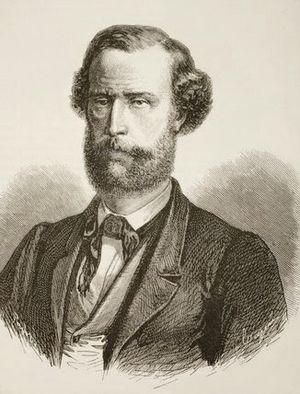Manuel Vilar facts for kids
Quick facts for kids
Manuel Vilar
|
|
|---|---|
 |
|
| Born |
Manuel Vilar i Roca
15 November 1812 |
| Died | 25 November 1860 (aged 48) Mexico City, Mexico
|
| Nationality | Spanish |
| Known for | Sculpture |
| Movement | Romanticism |
Manuel Vilar i Roca (born November 15, 1812, in Barcelona, died November 25, 1860, in Mexico City) was an important Spanish sculptor. He was known for his art in the Romantic style.
Contents
Manuel Vilar's Life and Art
Early Life and Training
Manuel Vilar began his art studies at the Escola de la Llotja in Barcelona. He learned from a famous sculptor named Damià Campeny. In 1833, he received a special grant. This allowed him to travel to Rome, Italy, to continue his studies.
In Rome, he learned from other great artists like Antoni Solà. He also worked as an assistant in the studios of Pietro Tenerani. Manuel Vilar even got advice from the well-known sculptor Bertel Thorvaldsen. He was also influenced by a group of artists called the Nazarene movement.
Teaching in Spain and Mexico
After his time in Rome, Manuel Vilar returned to Spain. He became an art instructor at the Escola, where he had once been a student. He taught there until 1845.
That year, he and a painter named Pelegrí Clavé received exciting job offers. They were asked to come and teach art in Mexico. Manuel Vilar moved to Mexico and became the head of the sculpture classes. He taught at the famous Academia de San Carlos in Mexico City.
Vilar's Teaching Style and Artworks
As a teacher, Manuel Vilar believed in strong foundations. He made sure his students carefully studied human anatomy. They also sketched classic art examples. He taught them how to work with marble, make plaster models, and sculpt with clay.
Vilar created sculptures about many different topics. He worked on religious and historical subjects. He also made art inspired by classical stories. Importantly, he also created sculptures about the Pre-Hispanic history of Mexico. His art style was mostly Romanticism, but he also added parts of Realism. This mix made his work unique.
Famous Sculptures
Some of Manuel Vilar's early works in Barcelona were about stories from the Bible and myths. These included "Jason stealing the golden fleece" and "The trial of Daniel in Babylon."
In Mexico, he created sculptures of important figures. These included Moctezuma, La Malinche, Iturbide, and Tlahuicole. He also made many busts, which are sculptures of a person's head and shoulders. Two famous busts are of Lucas Alamán and Antonio López de Santa Anna. You can also see his statue of San Carlos Borromeo at the Academia.
Later Life
Manuel Vilar passed away from pneumonia when he was only 48 years old. He was buried at the iglesia de Jesús Nazareno in Mexico City. His students created a monument there to remember him and his contributions to art.
Gallery
-
Monument to Columbus, Mexico City
See also
 In Spanish: Manuel Vilar para niños
In Spanish: Manuel Vilar para niños



